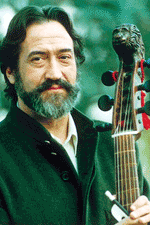> [Archived] Chronicles

Jordi Savall at Cité de la musique in Paris
As I was saying in an interview this year during the programme Successful music stories, Jordi Savall works for years at his complex projects, sharing them alternatively afterwards, during a season. On November 30th 2010 he presented works from Cartea științei muzicii (The Book of Science of Music) of the scholar Dimitrie Cantemir, on December 8th 2010, at Iași, at Cité de la musique in Paris, together with two of the ensembles he has created in time - La Capella Reial de Catalunya and Hespèrion XXI - Jordi Savall invited us in the music world of Miguel de Cervantes and his famous character, Don Quijote.
'Only a writer with an excellent training and music experience, and a vast knowledge on the practice and the function of music as such, on the old repertoire of romances, but also his contemporary romances, on songs and dances and music instruments used in that period, could integrate so much accurate information on the daily music event in his novels', Savall remarked in the programme of the concert.
In the series 'Heroes', proposed by Cité de la musique, the artist revived a project started in the 1970's together with Montserrat Figueras, Hopkinson Smith, Ton Koopman and other musicians from the Ensemble Hespèrion XX, selecting songs, romances, madrigals and plays quoted by Cervantes, to whom he added the texts from the story of Don Quijote, recited convincingly and humorously by actor Marcel Bozonnet.
We all know the Catalan artist is not only one of the most important interpreters of old music now; he creates, he makes real style exercises, he reconciles music and word and recomposes scores starting from a few notes forgotten somewhere in a manuscript. This is how it happened this time also; for example, the popular romance where they talk about the loves and the adventures of Count Claros was rebuilt based on a melody of four notes written in 1565 by Francisco Salinas in his treaty Musica Libri VII and helped by the harmonisations and the variations of Venegas de Henestrosa. Not only the musicians on the stage felt especially attached to this score, they chose to retake as a second encore of the concert (after a Christmas Song of a Catalan composer), but the audience left the theater humming the four essential notes.
The entire performance had the coherence imposed by Manuel Forcano. He created the succession of moments taking into account the needs of drama and some theatricality of the sound flow to support the texts in the same time, adapted to music by the same Forcano.
But Jordi Savall's personality can be felt in each of them, he succeeds in giving the entries, encouraging the artists, asking more from some of them or praising them, doing everything with such an amazing discretion, only by glancing, mastering and offering everything. Tonight I was left with a profound impression on the complexity of the artist Jordi Savall and the certain wish to read again the novel of Miguel de Cervantes - Don Quijote - with Savall's music in the background.
(with help from the Romanian Cultural Institute in Paris)
Translated by Zenovia Popa and Andreea Velicu
MA Students, MTTLC, Bucharest University














